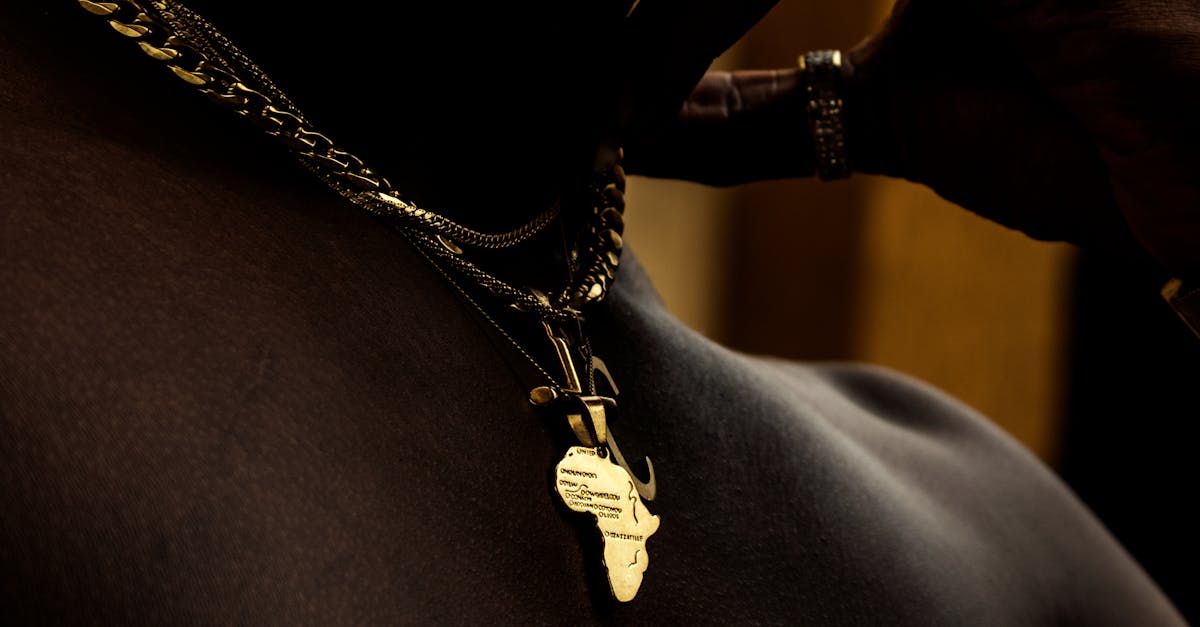Unveiling the Gold Standard: How IoT Technology Transforms the Gold Supply Chain

The gold industry is undergoing a significant transformation driven by the integration of Internet of Things (IoT) technology. IoT is revolutionizing the way gold is tracked, verified, and managed throughout the supply chain, leading to unprecedented levels of transparency, accountability, and efficiency. As a result, stakeholders across the industry are embracing IoT to enhance trust, mitigate risks, and ensure responsible and sustainable gold practices.
From the moment gold is extracted from the mine to its final destination, IoT devices such as sensors, RFID tags, and blockchain technology provide real-time visibility into every stage of the supply chain. This comprehensive tracking system allows for accurate provenance and traceability, ensuring that gold is ethically sourced and free from conflict or illicit activities. At the same time, IoT strengthens logistics monitoring, enabling stakeholders to track gold movements in real-time and identify potential disruptions or inefficiencies.
The transformative power of IoT in the gold industry cannot be overstated. By embracing this technology, businesses can gain a competitive edge, meet industry standards and ethical guidelines, and contribute to a more sustainable and transparent gold supply chain. The future of gold is digital, and IoT is leading the way towards a brighter, more responsible, and prosperous industry.
Key Insights from the Article
- IoT technology is transforming the gold supply chain, enhancing transparency, accountability, and efficiency.
- IoT devices such as sensors, RFID tags, and blockchain technology enable real-time tracking of gold throughout the supply chain.
- IoT strengthens logistics monitoring, allowing for real-time visibility of gold movements and the identification of potential disruptions.
- IoT enhances transparency and accountability, fostering trust and confidence among stakeholders.
- IoT contributes to risk mitigation and regulatory compliance, helping businesses meet industry standards and ethical guidelines.
1. The Transformative Role of IoT in Gold Supply Chains
One of the most significant benefits of IoT in the gold supply chain is its ability to enhance transparency. By tracking gold from mine to market, IoT devices create a comprehensive and tamper-proof record of every stage of the supply chain. This transparency helps to eliminate fraud, conflict gold, and other illicit activities, ensuring that consumers can trust the gold they purchase.
Furthermore, IoT strengthens accountability throughout the gold supply chain. With real-time data on gold movements and activities, stakeholders can pinpoint inefficiencies, identify potential risks, and ensure compliance with industry standards and regulations. This increased accountability helps to foster trust between stakeholders and promotes responsible and ethical practices across the board.
2. Integrating IoT Devices for Real-Time Tracking

The integration of IoT devices in the gold supply chain enables real-time tracking of gold from mine to market, providing unprecedented visibility and control over the supply chain. Sensors, RFID tags, and blockchain technology play crucial roles in this transformation.
Sensors are deployed at various points throughout the supply chain to collect data on temperature, humidity, and other environmental conditions. This data is then transmitted wirelessly to a central platform, where it can be monitored and analyzed in real-time. By tracking environmental conditions, sensors help to ensure that gold is stored and transported in optimal conditions, minimizing the risk of damage or loss.
RFID tags are another important IoT device used in the gold supply chain. These tags are attached to individual gold bars or items and contain a unique identifier that can be read by RFID readers. This allows for the precise tracking of gold movements throughout the supply chain, enabling stakeholders to pinpoint the exact location of any gold item at any given time.
Blockchain technology is also playing a transformative role in the gold supply chain. Blockchain is a distributed ledger system that provides a secure and tamper-proof record of transactions. By integrating blockchain into the gold supply chain, stakeholders can create a comprehensive and immutable record of every stage of the supply chain, from mining to refining to retail. This transparency helps to eliminate fraud and conflict gold, ensuring that consumers can trust the gold they purchase.
3. Improved Traceability and Provenance
IoT devices such as sensors, RFID tags, and blockchain technology collect and transmit data on the origin, movement, and storage conditions of gold. This data is then stored on a central platform, where it can be accessed and analyzed by authorized stakeholders. This comprehensive data trail provides a clear and auditable record of the gold’s provenance, ensuring that consumers can trust the authenticity and ethical sourcing of the gold they purchase.
Furthermore, IoT enhances traceability by enabling real-time monitoring of gold movements throughout the supply chain. This allows stakeholders to pinpoint the exact location of any gold item at any given time, reducing the risk of theft or diversion. The ability to track gold in real-time also helps to identify and mitigate potential supply chain disruptions, ensuring a more efficient and reliable flow of gold from mine to market.
4. Strengthened Monitoring of Logistics

The integration of IoT devices in the gold supply chain enables strengthened monitoring of logistics, providing real-time visibility of gold movements and allowing for the identification of potential disruptions. This enhanced visibility helps stakeholders to optimize the efficiency and security of the supply chain, minimizing the risk of delays, losses, or theft.
IoT devices such as sensors and RFID tags are deployed at various points throughout the supply chain to collect data on the movement and storage of gold. This data is then transmitted wirelessly to a central platform, where it can be monitored and analyzed in real-time. By tracking gold movements in real-time, stakeholders can identify potential disruptions or inefficiencies and take proactive measures to mitigate them.
For example, if a shipment of gold is delayed at a certain point in the supply chain, IoT devices can provide real-time alerts, allowing stakeholders to investigate the cause of the delay and take corrective action. This helps to minimize the impact of disruptions on the overall supply chain and ensures that gold is delivered to its destination on time and in good condition.
5. Enhanced Transparency and Accountability
IoT devices such as sensors, RFID tags, and blockchain technology provide a comprehensive and tamper-proof record of gold movements and activities throughout the supply chain. This transparency enables stakeholders to track the provenance and ownership of gold, ensuring that it is ethically sourced and free from conflict or illicit activities. Consumers can also have greater confidence in the authenticity and quality of the gold they purchase, knowing that it has been responsibly sourced and handled.
Furthermore, IoT enhances accountability by providing stakeholders with clear visibility into the actions and responsibilities of other participants in the supply chain. This helps to identify and mitigate risks, ensures compliance with industry standards and regulations, and promotes a culture of responsible and ethical behavior across the board.
6. Mitigating Risks and Ensuring Compliance
IoT technology plays a crucial role in mitigating risks and ensuring compliance in the gold supply chain. By providing real-time visibility and data, IoT devices help stakeholders to identify and address potential risks, comply with industry standards and regulations, and promote ethical and responsible practices throughout the supply chain.
IoT devices such as sensors, RFID tags, and blockchain technology provide a comprehensive and tamper-proof record of gold movements and activities. This data can be analyzed to identify patterns and trends that may indicate potential risks, such as theft, fraud, or non-compliance with regulations. By proactively addressing these risks, stakeholders can minimize their impact on the supply chain and protect their businesses.
Furthermore, IoT enhances compliance by providing stakeholders with clear visibility into the actions and responsibilities of other participants in the supply chain. This helps to ensure that all stakeholders are adhering to industry standards and regulations, reducing the risk of legal or ethical violations. IoT also provides evidence of compliance, which can be valuable in demonstrating to customers, regulators, and other stakeholders that a business is operating in a responsible and ethical manner.
7. Driving Sustainable and Ethical Gold Practices
IoT technology is playing an increasingly important role in promoting sustainable and ethical gold practices throughout the supply chain. By providing real-time visibility and data, IoT devices are helping stakeholders to reduce the environmental impact of gold mining and refining, ensure responsible sourcing, and promote ethical and sustainable practices across the board.
IoT devices such as sensors and drones can be used to monitor environmental conditions at gold mining sites, ensuring that mining operations are conducted in a responsible and sustainable manner. These devices can also be used to track the movement of gold throughout the supply chain, ensuring that it is not sourced from conflict zones or other unethical sources.
Furthermore, IoT is helping to promote ethical and sustainable practices by providing consumers with greater transparency into the gold supply chain. Consumers can now use IoT-enabled devices to scan gold products and access information about their provenance, environmental impact, and ethical sourcing. This transparency empowers consumers to make informed choices about the gold they purchase, driving demand for sustainably and ethically sourced gold.
How can IoT help to reduce the environmental impact of gold mining?
IoT devices can be used to monitor environmental conditions at gold mining sites, ensuring that mining operations are conducted in a responsible and sustainable manner. For example, sensors can be used to monitor air and water quality, and to track the amount of energy and water used in mining operations. This data can then be used to identify opportunities for reducing the environmental impact of gold mining.
How can IoT help to ensure responsible sourcing of gold?
IoT devices can be used to track the movement of gold throughout the supply chain, ensuring that it is not sourced from conflict zones or other unethical sources. For example, RFID tags can be attached to gold bars and other items, and then tracked using RFID readers throughout the supply chain. This data can then be used to verify the provenance of gold and to ensure that it has been sourced in a responsible manner.
How can IoT help consumers to make more informed choices about the gold they purchase?
IoT-enabled devices can be used to scan gold products and access information about their provenance, environmental impact, and ethical sourcing. This transparency empowers consumers to make informed choices about the gold they purchase, driving demand for sustainably and ethically sourced gold.
Table of Key Insights
| Key Insight | Description | |—|—| | Enhanced Transparency and Accountability | IoT enhances transparency and accountability throughout the gold supply chain, fostering trust and confidence among stakeholders.| | Real-Time Tracking | IoT devices such as sensors, RFID tags, and blockchain technology enable real-time tracking of gold from mine to market, providing unprecedented visibility and control. | | Strengthened Logistics Monitoring | IoT strengthens logistics monitoring, allowing for real-time visibility of gold movements and the identification of potential disruptions. This helps to ensure the efficient and secure flow of gold throughout the supply chain. | | Risk Mitigation and Compliance | IoT contributes to risk mitigation and regulatory compliance, helping businesses meet industry standards and ethical guidelines. IoT devices provide real-time data and insights that can be used to identify and address potential risks, ensuring responsible and ethical practices. | | Sustainable and Ethical Practices | IoT plays a crucial role in promoting sustainable and ethical gold practices. IoT devices can be used to monitor environmental conditions at mining sites, track the movement of gold throughout the supply chain, and provide consumers with greater transparency into the sourcing of gold. This helps to reduce the environmental impact of gold mining, ensure responsible sourcing, and drive demand for sustainably and ethically sourced gold.|

0 responses to “Harnessing the Power of IoT in Gold Supply Chains: Real-Time Tracking and Accountability”